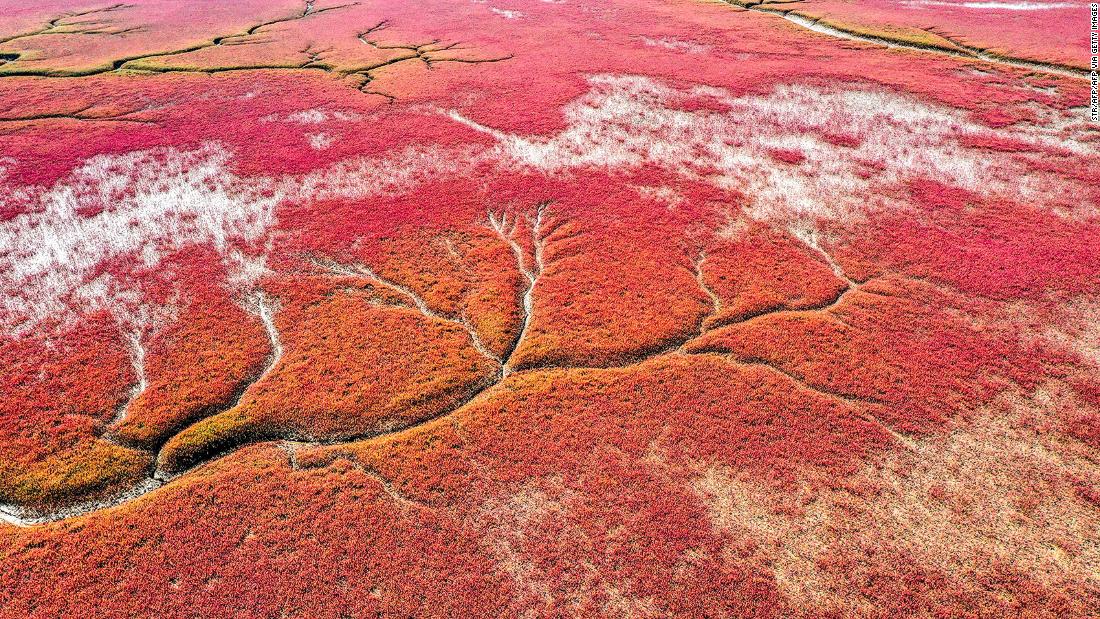
This "beach" isn't comprised of sand, however. The dramatic hues are caused by the blossoming seepweed that grows on the wetland's massive mudflat.
Dubbed "China's most romantic leisure coastline" by local media, the 6,667-hectare mudflat inside the Red Beach National Scenic Corridor is listed as a national scenic spot.
Panjin's seepweed, which blankets the wetland, begins to sprout in spring and blossoms in red as early as July. The red hue gets more vibrant closer to autumn and peaks in September and October, turning the coastal mudflat into a crimson carpet. (The above aerial photos were taken on August 7.)
According to the Red Beach Wetland Resort Administrative Committee, the area attracts more than 2 million tourists annually.
A meandering wooden path has been built on the mudflat, allowing visitors to walk across the Red Beach.
There are around 100 varieties of seepweed, which grows on tidal wetlands, around the world. But these plants -- also called Suaeda -- are rarely red. The seepweed growing in Panjin is a unique species.
The marshland is also famous for its mitten crabs, bamboo shoots and rice, the latter of which was the official rice of the 2008 Beijing Olympics Games.
It's home to more than 260 different species of migratory birds, including endangered black-billed gulls and wild red-crowned cranes-- the second-rarest crane in the world.
August 12, 2020 at 08:21AM
https://www.cnn.com/travel/article/china-panjin-red-beach/index.html
Dramatic aerial photos showcase China's wild 'crimson beach' - CNN
https://news.google.com/search?q=Red&hl=en-US&gl=US&ceid=US:en

No comments:
Post a Comment